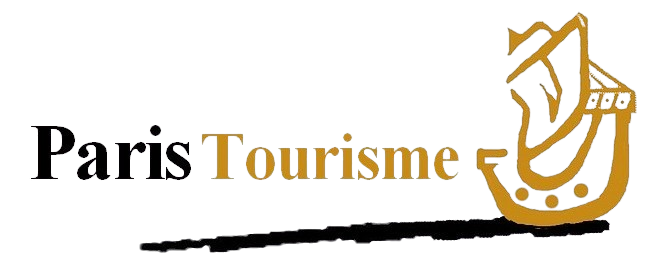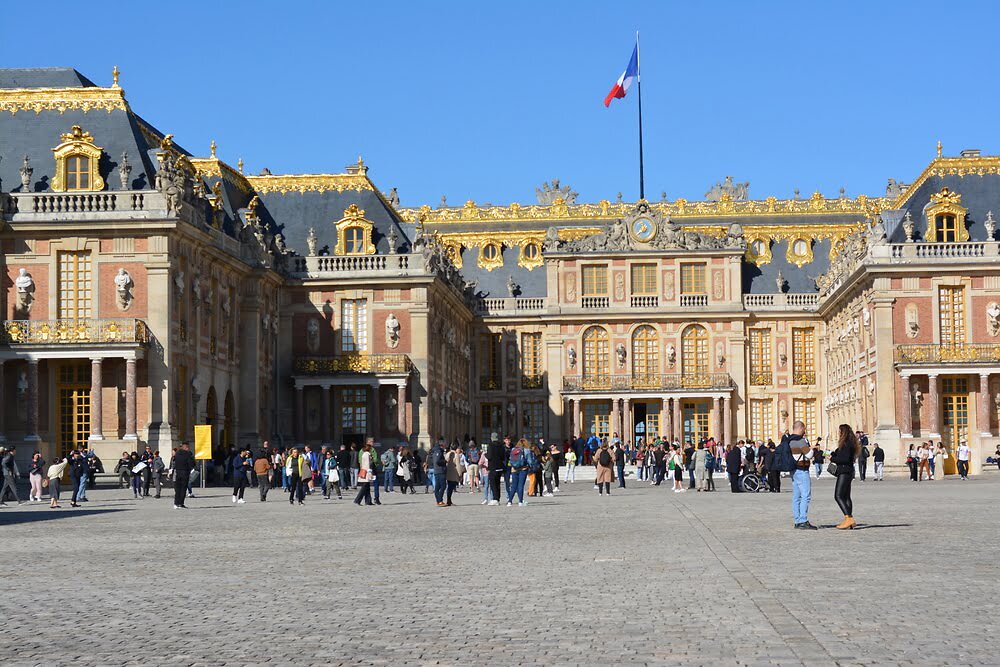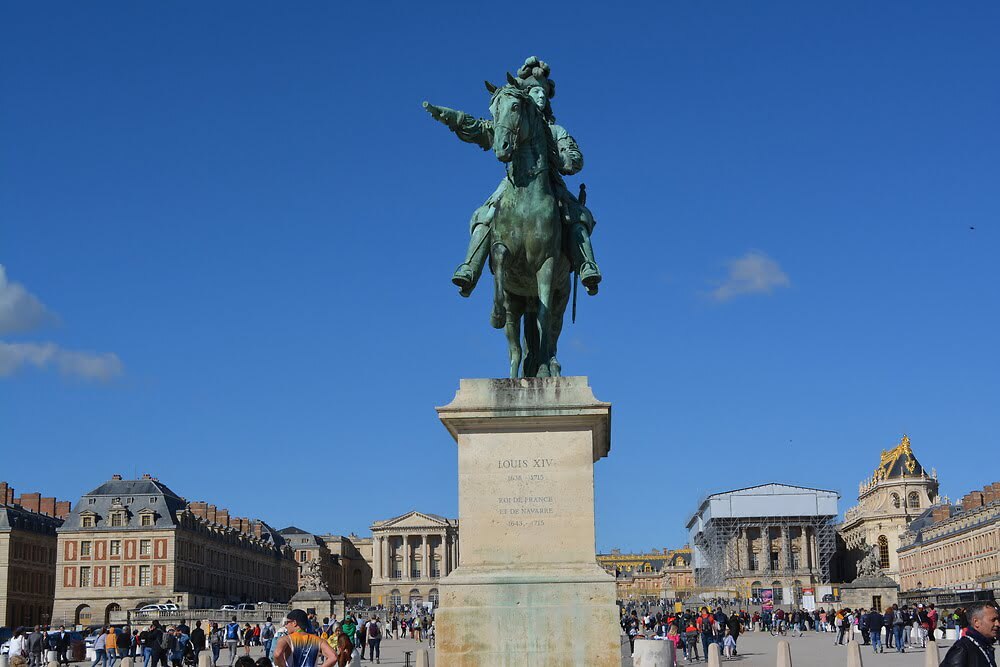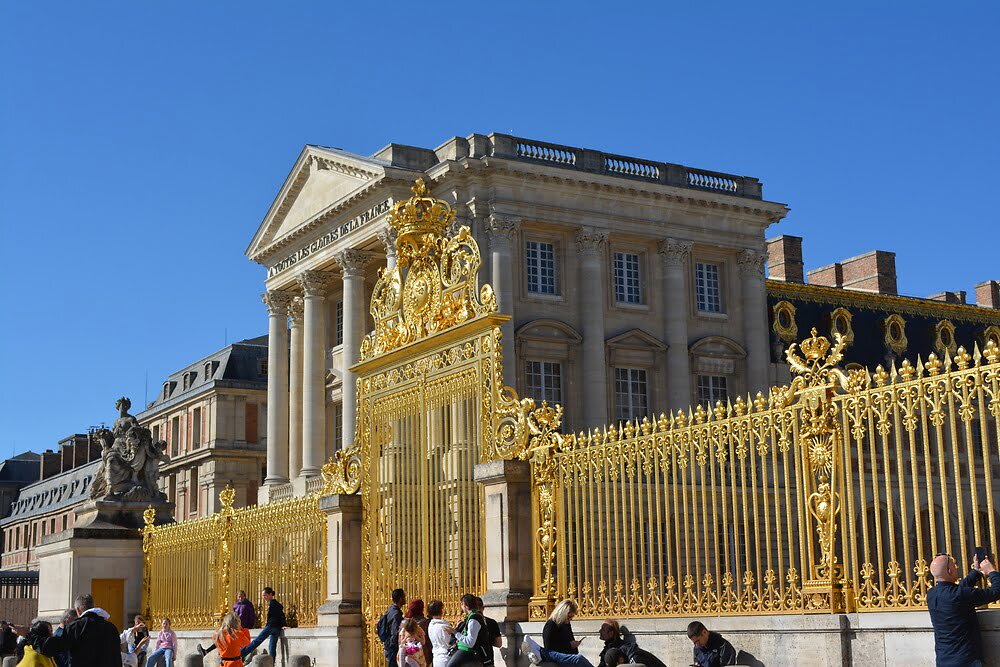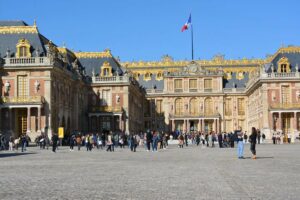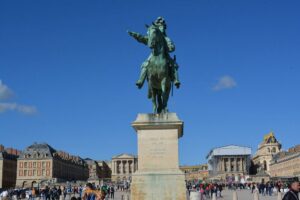- Paris Hotels
- Hotels by Category
- Hotels by Districts
- Champs Elysees Hotel
- Montmartre Hotel
- Saint Germain des Prés Hotel
- Montparnasse Hotel
- Porte de Versailles Hotel
- Republique – North Train Station Hotel
- Place de la Nation Hotel
- Latin Quarter Hotel
- Opera Garnier Hotel
- Marais – Bastille Hotel
- Gare de Lyon Hotel
- Gare Saint-Lazare Hotel
- Hotel Place d’Italie
- Other Hotels
- Hotels by Category
- Districts
- Paris map
- News
- Contact us
Palace of Versailles
- Profile
- prev
- next
- prev
- next
-
The Sun-king palace in Versailles is half an hour by train from Paris.
The Castle
The Chateau proposes two itineraries: either a guided tour or not. Apart from the state apartments of the king and queen and the Galerie des Glaces (the Hall of Mirrors, where the Treaty of Versailles was signed to end World War 1), which you can visit on your own, most of the palace can only be viewed in guided groups, and whose times are much more restricted. Long queues are common.
Unfortunately, only a small part of the palace can be visited : the State Apartments of the King and Queen, and the Hall of Mirrors. The worst time to visit the Chateau is on Sunday when the entrance fee is reduced and the queues are interminable. A guided tour, for an extra charge, takes you in the King’s Private Bedroom, the Royal Opera, and the rooms occupied by Madame du Barry. And, for a little more, you may visit the pavilions of the Grand and Petit Trianons.
Don’t set out to see all the palace in one day for it’s not possible. Quite apart from the size, tours of both Mme du Barry’s apartments and of the Dauphin and Dauphine’s apartments take place at the same time : 2 pm.
History
One of the most visited monuments in France, amongst the three most visited, is the Palace of Versailles. Wanting to escape the busy life in Paris, and to keep the nobility under his control, Louis XIV built this chateau in which he set up home and installed the government. Louis Le Vau was commissioned to renovate and extend an old hunting lodge, Le Notre created the gardens from swamp land, and Mansart masterminded the hydraulic display of the fountains.
Beginning in 1664, the construction of the château lasted virtually until Louis XIV’s death in 1715. the Palace of Versailles was never meant to be a home, kings were not homely people. Second only to God, and the head of an immensely powerful state, Louis XIV was an institution rather than a private individual. His instability, comings and goings, were minutely regulated and rigidly encased in ceremony, attendance at which was an honour much sought after by courtiers. Versailles was the headquarters of every arm of the state. After the death of Louis XIV, the château was abandoned for a few years. Then Louis XV moved in in 1722. It remained the residence of the royal family until the Revolution of 1789, and at this time the furniture was sold and the pictures dispatched to the Louvre. Thereafter it fell into ruin and was nearly demolished by Louis-Philippe. And in 1871, during the Paris Commune, it became the seat of the nationalist government, and the French parliament continued to meet in Louis XV’s opera building until 1879. The restoration only began between the two world wars.
The many buildings attached to the castle form a small town. The whole complex is a magnificent monument. The garden facade is 575 metres long with various annexes dotted here and there in a park which is several kilometres in both length and width. The park shows the skill of Le Notre in making good use of the natural resources on the site.
The Park
If you just feel like taking a stroll, the park is free (except on Sunday) and the scenery is better the further you go from the palace. There are even informal groups of trees near the lesser outcrops of royal mania : the Italianate Grand Trianon, designed by Hardouin-Mansart in 1687 as a “country retreat” for Louis XIV, and the more modest Greek Petit Trianon, built by Gabriel in the 1760s. More charming and rustic than either of these is Le hameau de Marie-Antoinette, a play-village and farm built in 1783 for Louis XVI’s queen to indulge the fashionable Rousseau-inspired fantasy of returning to the natural life.
The park is extremely large. If you find that you cannot manage them by foot, a small train shuttles between the terrace in front of the castle and the Trianons. There are also bicycles for rent by the Grand Canal, itself a good fifteen minutes’ walk across the formal gardens, and boats for rent on the canal.
Not to be missed
After you have had a chance to take a look at the Chateau and the gardens, do not leave without taking a walk in the town, where everything leaves the visitor overwhelmed by the excellent taste, as well as the power and wealth, of the man for whom it was all built.
Location : Place d’Armes 78000 Versailles
Phone : 01 30 83 78 00
How to get there :
- RER C : Versailles Chantiers, Versailles Rive Gauche.
- Bus : 171
- Autoroute A13 (direction Rouen), 1ère sortie Versailles-Château.
Opening :
- November to March: 9am to 5pm.
- April to October: 9am to 6pm.
- Closed on Monday
Official website : https://www.chateauversailles.fr
-
Place d'Armes, 78000 Versailles, France
Nearby hotels
-
14 Rue Stanislas, 75006 Paris, France
-
32 Rue des Saints-Pères, 75007 Paris, France
-
21 Rue de Penthièvre, 75008 Paris, France
